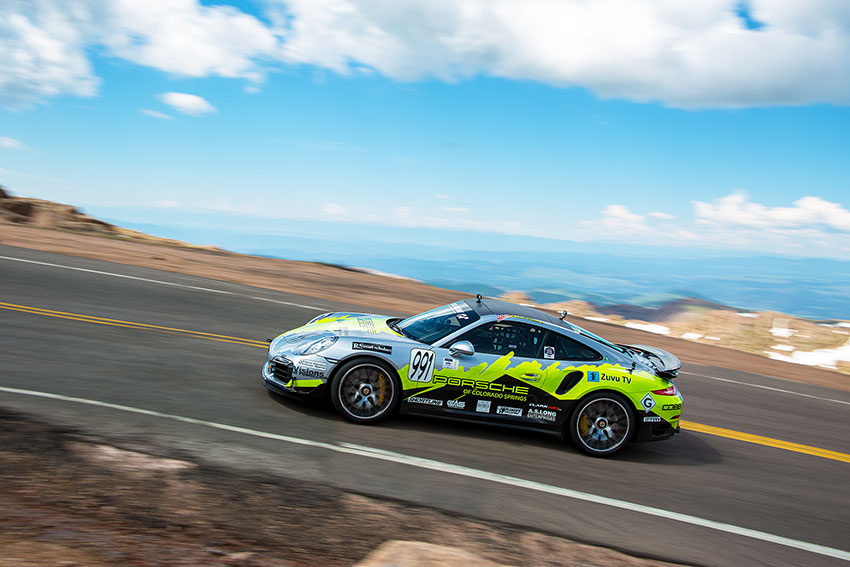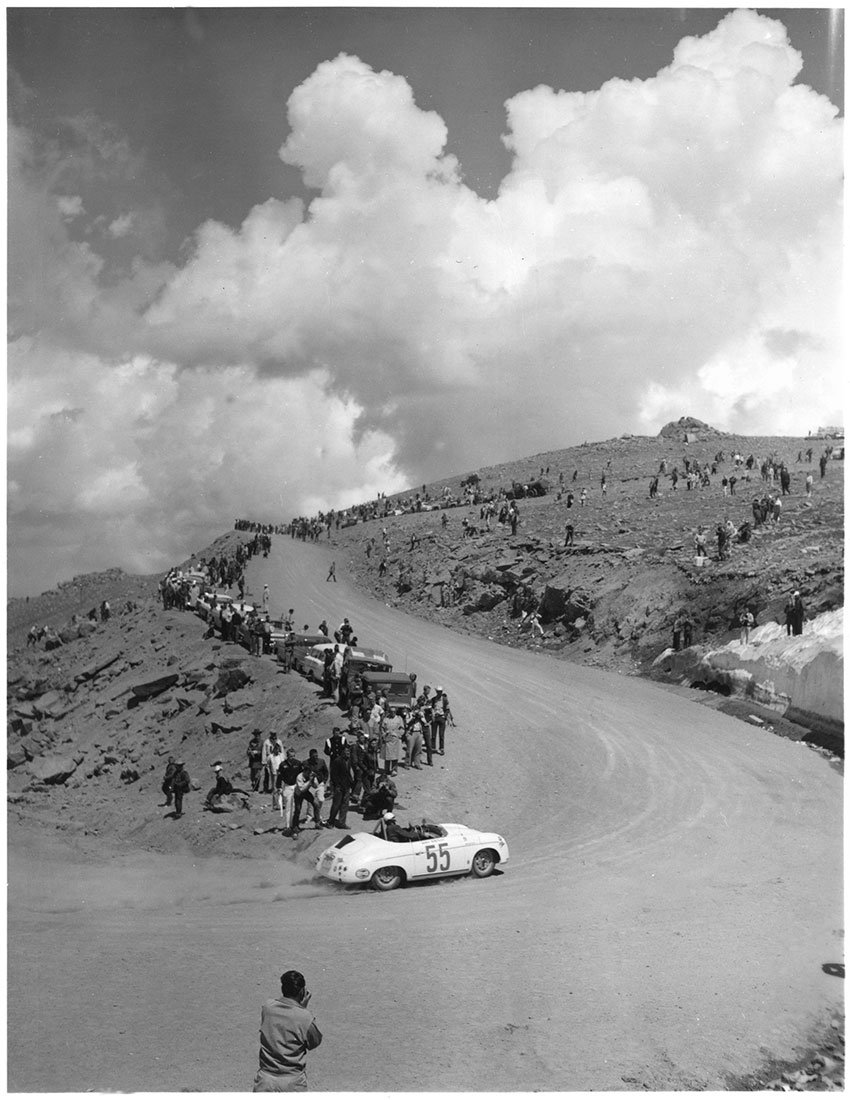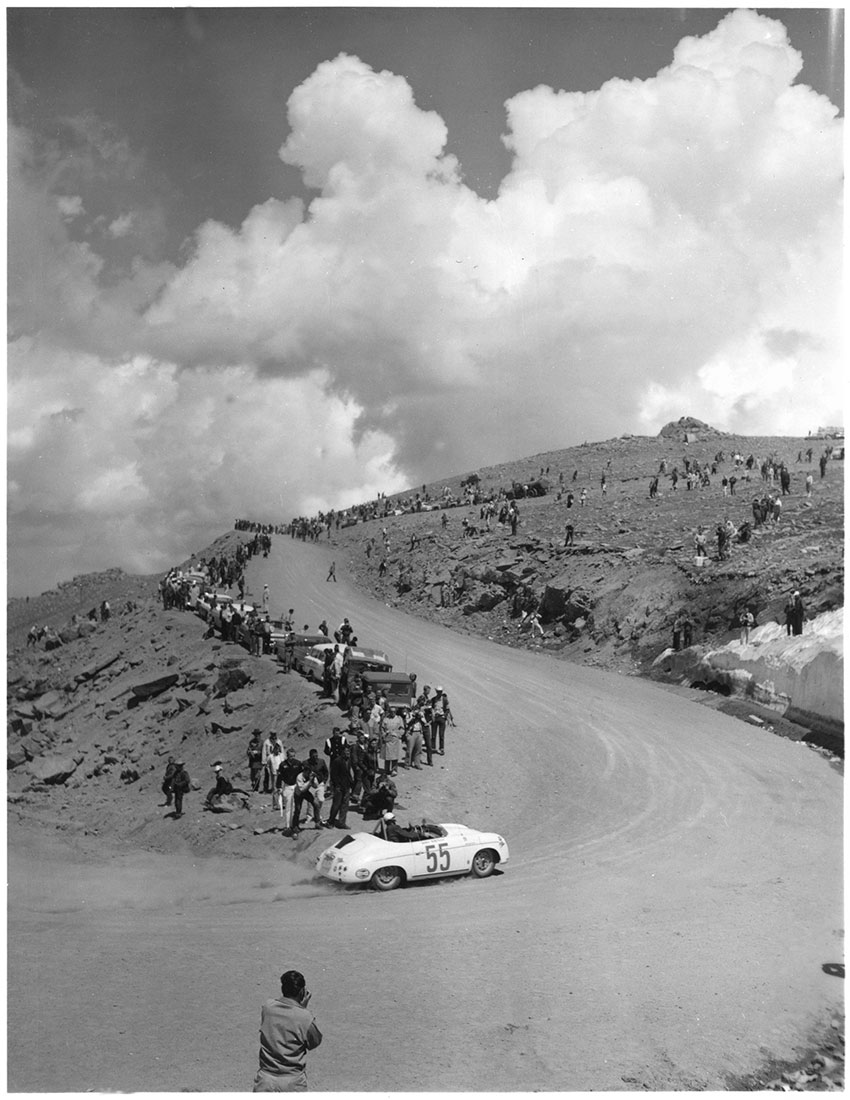
This year marks the 100th anniversary of the Pikes Peak International Hill Climb. So it’s worth noting that Porsche has had a large impact on the running of America’s “Race to the Clouds.” While Jeff Zwart is the best-known Porsche racer at Pikes Peak – with an impressive eight wins – he wasn’t the first to race or win with a Porsche on that lofty summit.
Records show that distinction went to Bill Paine in 1958, driving a white Porsche 356A slightly modified to pull more air into the intake. Paine’s mid-mountain time was competitive in class, but his overall time of 24:08.8 reflects either a mechanical issue tied to the altitude or that he ran into the legendary Pikes Peak weather, which can include rain, fog, sleet, and even snow in the summer months.
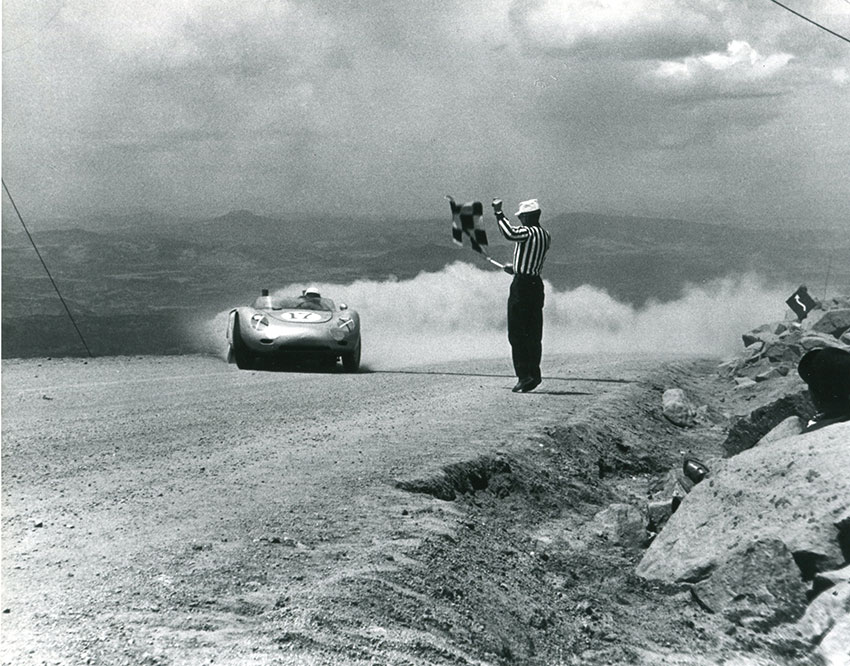
A year later Colorado Springs-based Bob Donner Jr. entered a lighter, more powerful Porsche RS-60 in the 1500cc Sports Car class, easily setting a time that was competitive in the larger unlimited class. However Donner didn’t win in 1959 because he suffered an off-course excursion that hampered his progress. Better things came in the following three years. Since Donner and protégé Mike Collins were already racing Porsche Spyders in the SCCA, they figured their lightweight, mid-engine layout would be perfect, even on the steep gravel road. Porsche engineer Herbert Dramm helped with parts as needed.
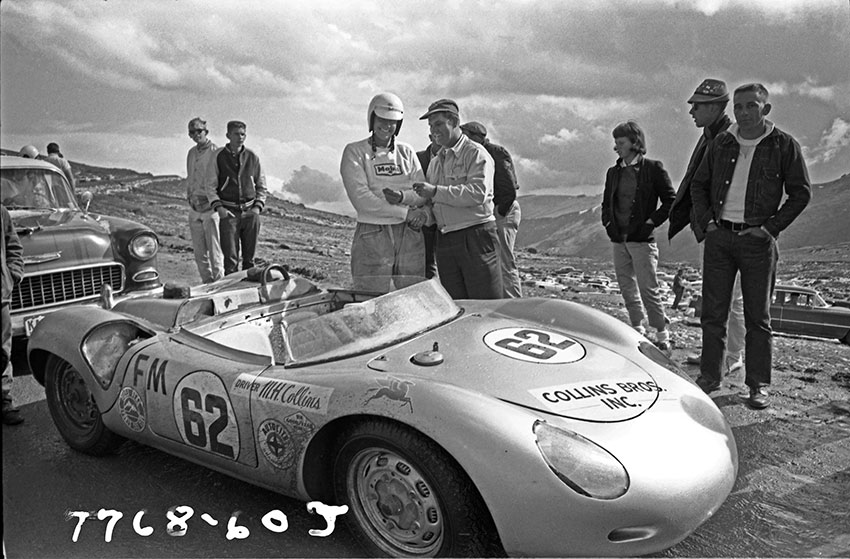
The Porsche drivers made a couple modifications for the race. Following Paine’s lead, they used a custom engine cover made by Colorado Springs body-man Ed Kyle and his crew that fed air directly to the carburetors from the top-side and protected the intakes from dirt, dust, and stones. They also developed a simple but effective filter system with kitchen sponges and wire mesh that they cleaned before each run. Additionally, they had Kyle’s crew coat the inside of their fenders with fiberglass to prevent the stones flying up and punching inside-out dents in the lightweight aluminum bodywork. Donner ran an RS-60 in 1959 and 1960 in the 1500cc class and then an RS-61 in 1961 and 1962 in the 2000cc class taking three class wins.
Remarkably, Donner’s 1962 time of 14:23.3 was six seconds faster than Ak Miller’s unlimited class Devin powered by Ford’s largest racing engine. Collins won the 1500cc class in 1960. Other drivers racing Porsches RSKs, Spyders, or 356s in those years included Indy 500 winner Roger Ward and later-on IMSA and Trans-Am competitor Bob Hagestad. In fact, in 1962 Porsches dominated the 2000cc sports car class with seven of the ten finishers.
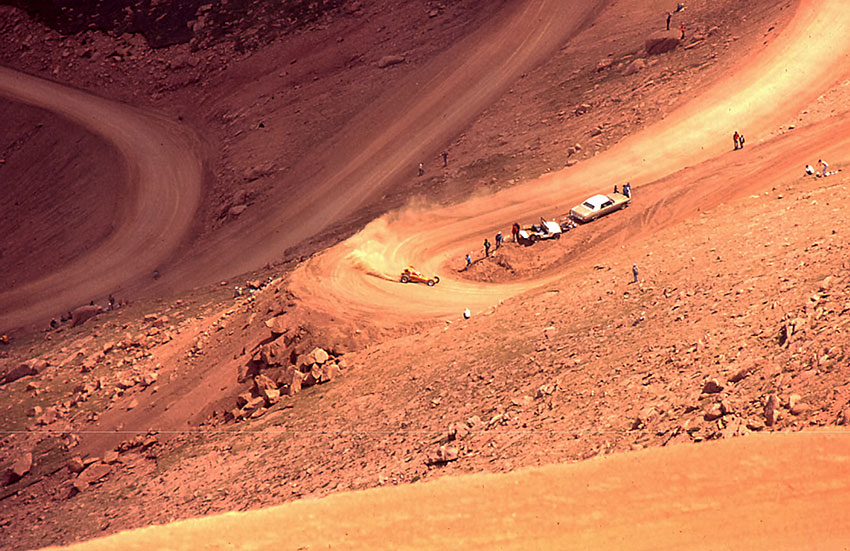
Porsche was absent from Pikes Peak from 1964 till 1971, when the California desert-buggy racers showed up in force. Initially most of them used VW engines till Garrettson Enterprises got involved with some specially tuned 914 motors that Jerry Woods had assembled, with head and valve tuning from Bruce Anderson. Paul Newman (not the actor) and Doug Draeger came up with an incredibly stiff and lightweight chassis that looked something like a Lola T-300 with the 914 engine hanging off the back. Woods remembers they were developing around 200 horsepower on the dyno at sea level, meaning that they were probably only getting 160hp at the 9,400-foot elevation start and maybe 100hp at the summit. Newman figures the entire car weighed less than 900 pounds with about 600 of that sitting on the rear axle.
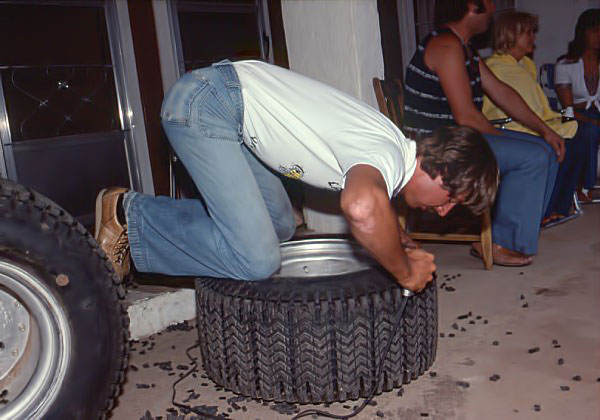
The lightweight buggies caused a stir among those who were still using front-engined sprint cars. There were protests and boycotts, but in the end it was all about who went fastest. Though the buggies were a handful to drive, in 1976 future four-time Indy winner Rick Mears won on his third try on the mountain, putting Porsche at the top of the victory podium once again. Mears didn’t mind the light front end so much, since he had learned to use the turning brake as a differential.
Mears remembers the challenge with fondness, noting “with the 156 corners you had to memorize the whole course because the approaches for many of them look very similar. If you didn’t know exactly where you were, you could end up in the ditch, the trees, or sailing through the sky. It was a huge challenge, but it was a tremendous amount of fun…. Jumping around and driving different things helped my career immensely. I met Bobby Unser there and when I started Indy car racing, he helped me learn the big ovals.” Though Mears planned to run a turbocharged 911 engine the following year, his Indy car career took off and he never made it back.
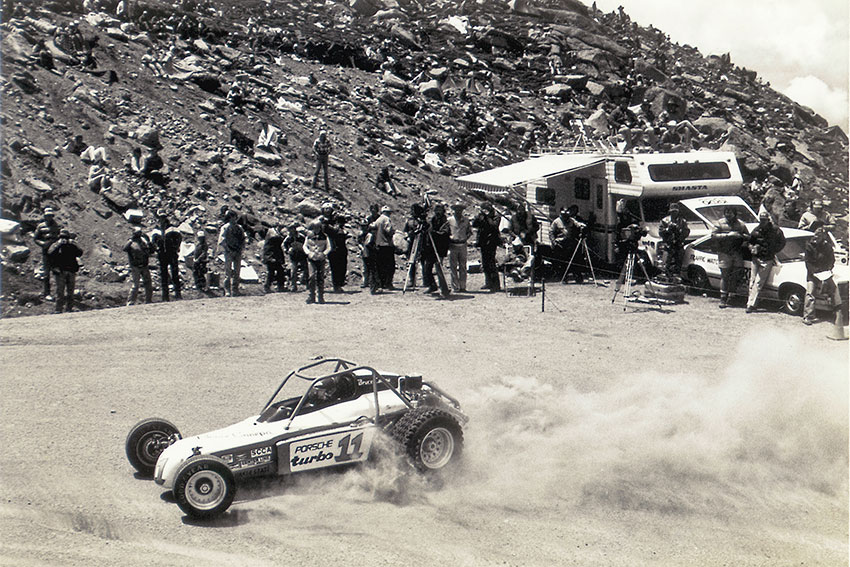
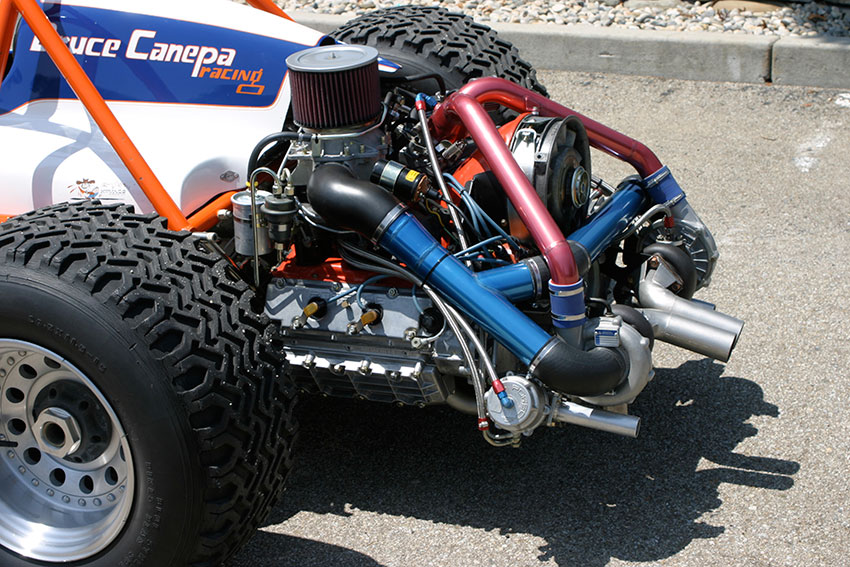
In 1979 a young California dirt-track racer named Bruce Canepa found his way to Pikes Peak with entirely new Newman-Draeger cars, now powered by Porsche 911 engines. They first tried the more powerful RSR set-up. Though it had more horsepower, it was also heavier, negating the power advantage. Their 1981 development featured the 930 turbocharged engine, which worked noticeably better, especially at altitude. Canepa was easily the fastest qualifier, but he met with drama in the race.
Canepa was ahead on time all the way to the legendary Ws, a precipitous series of switchbacks with very steep cliffs on both sides of the road. Though the turbo engine was vastly more powerful than the 914, it was relatively quiet. Canepa rounded a corner only to encounter a startled fan crossing the road and spun the car to avoid hitting him. He lost speed and momentum in the steepest part of the course, costing him more than 30 seconds to Gary Lee Kanawyer in another 914-powered Newman-Draeger. Kanawyer’s was the last open-wheel Porsche victory on Pikes Peak. Organizers raised the minimum weight for the class and the more powerful American V8 powered Well-Coyote chassis came into vogue.
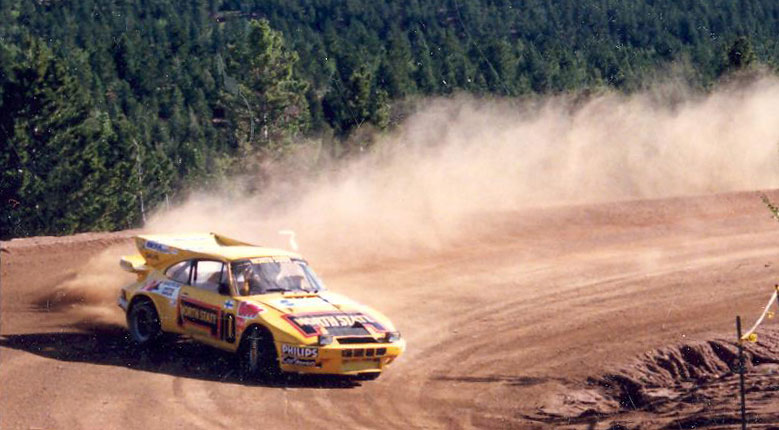
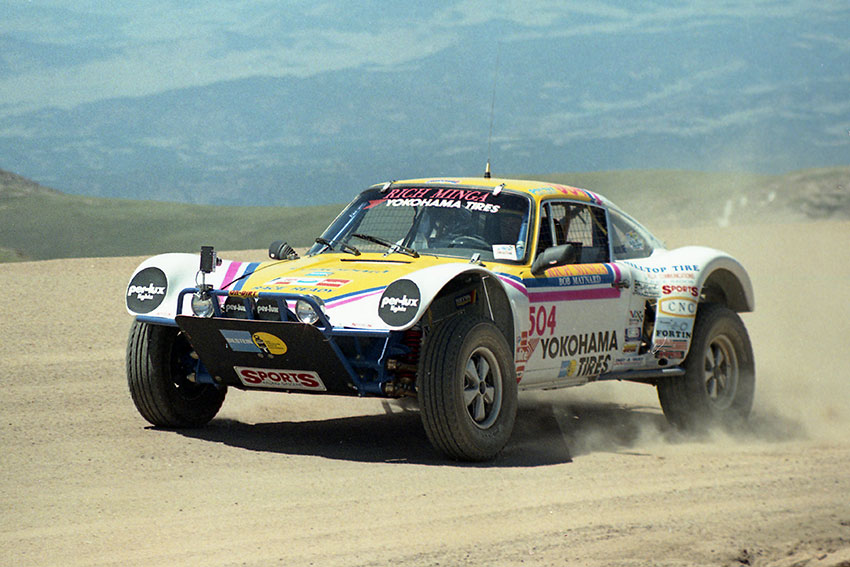
As open-wheeled Porsche participation waned, Pikes Peak instituted a rally class. Though there were no Porsche wins, Porsche 911 entries from Bruno Kreibich in 1981 and Matti Alamaki in 1986 showed promise, each foreshadowing Jeff Zwart’s efforts a few years later.
Though Zwart had been running Mazdas in SCCA Pro-Rally, he reasoned that Porsche’s latest 911, the all-wheel-drive 964, could be a great car if it had the proper amount of power. He approached the guys at Andial, who were still running the Porsche Motorsport operation in North America. They were able to secure him a 964 with a turbo engine that had run in the SCCA Supercar championship producing close to 500 horsepower. Zwart drove that car to his first Pikes Peak win in 1994 with an impressive 11:53.48 compared to Rod Millen’s overall best time of 10:04.06 in an unlimited Toyota that had nearly twice the horsepower and much greater downforce.
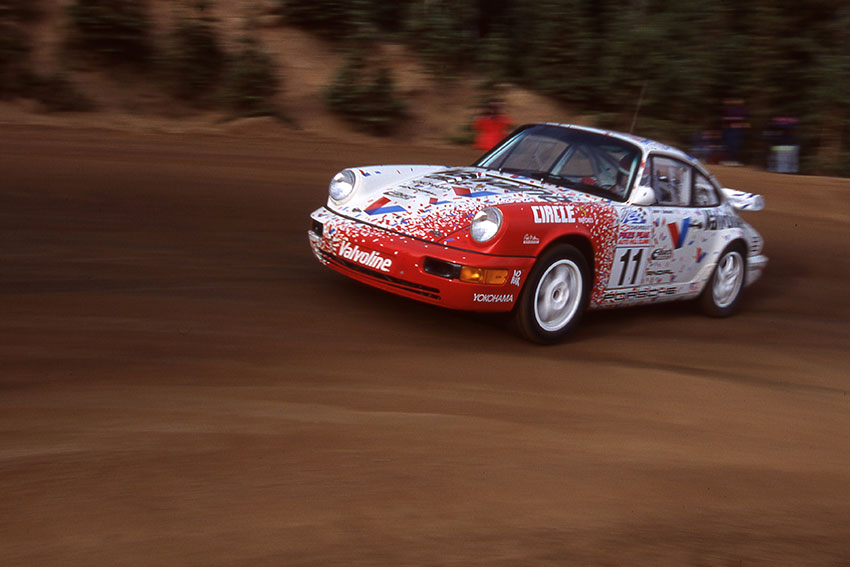
Alwin Springer remembers the altitude was the biggest issue. “At that time we had the CIS injection system on the car, which was essentially designed for sea-level. But with the help of Weissach, we were able to develop a system which over-rode the CIS. At a certain altitude, Jeff had to move a switch to different settings for the altitude as he climbed up the mountain.”
Zwart won again in 1995 in a Dieter Inzenhofer-prepared 993 and then several more times in a variety of Porsche cars. Other notable Porsche racers in the 1990s included David and Steve Beddor in a pair of RUFs and Carl Faucett and Guido Hamacher in a specially modified 1978 Porsche 928.
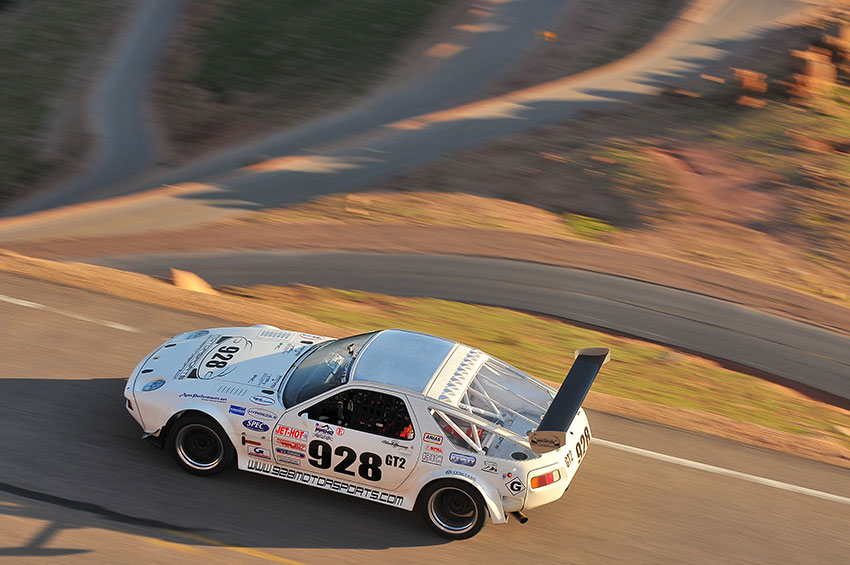
Then, in 2010, Zwart did the unthinkable. Rather than run a rally car, he entered a Porsche GT3 Cup racecar, running the gravel on what were essentially rain tires. That combination earned him win number seven. Then came a historical change for both the race and for Porsche racers. In 2012, the Pikes Peak road was paved all the way to the summit. If Porsche cars were good before, now they were the perfect Pikes Peak car.
In 2012, factory Porsche driver Romain Dumas, driving a GT3R, lost the Time Attack class by just 0.17 of a second to Rhys Millen and his Hyundai special. It was a day that Dumas would say was the worst of his racing career. Pikes Peak weather had an influence. Paul Dallenbach crashed heavily, causing a race-delay. During the time it took safety crews to extract Dallenbach, weather moved in. Though Dumas had a dry lower track, some upper portions were wet and he lost traction. Chris Lennon took first in the vintage class with his RSR.
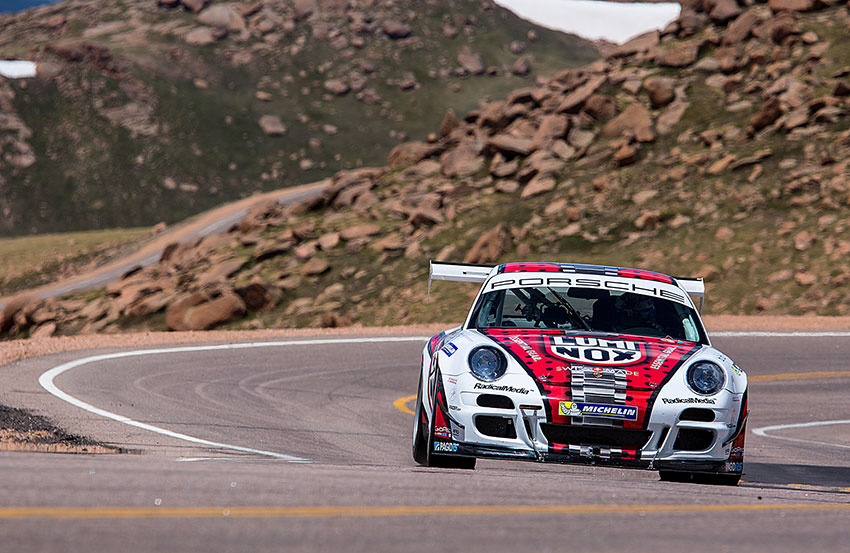
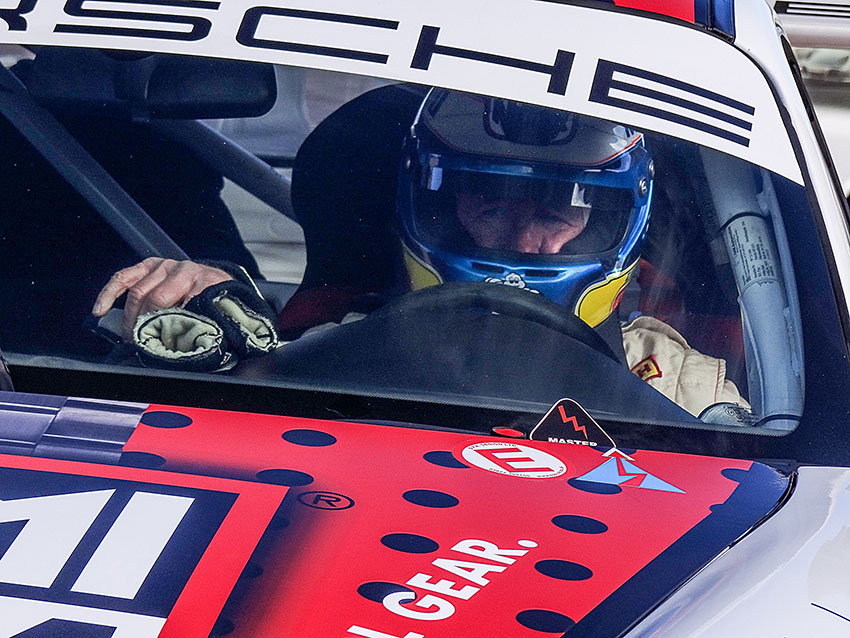
Year 2013 brought a very strong Porsche contingent to Pikes Peak. Zwart had combined the handling benefits of his GT3 Cup with the power of a race-tuned GT2 turbocharged engine delivering an estimated 900hp. He had very strong competition from David Donner, son of early 1960s RSK racer Bob Donner Jr. Donner entered a GT3 Cup. A four-time winner himself – including three overall victories – Donner set the fastest qualifying time. Both were strong contenders, though weather once again influenced the finishing order with Paul Dallenbach beating both the Porsches in a one-off Hyundai.
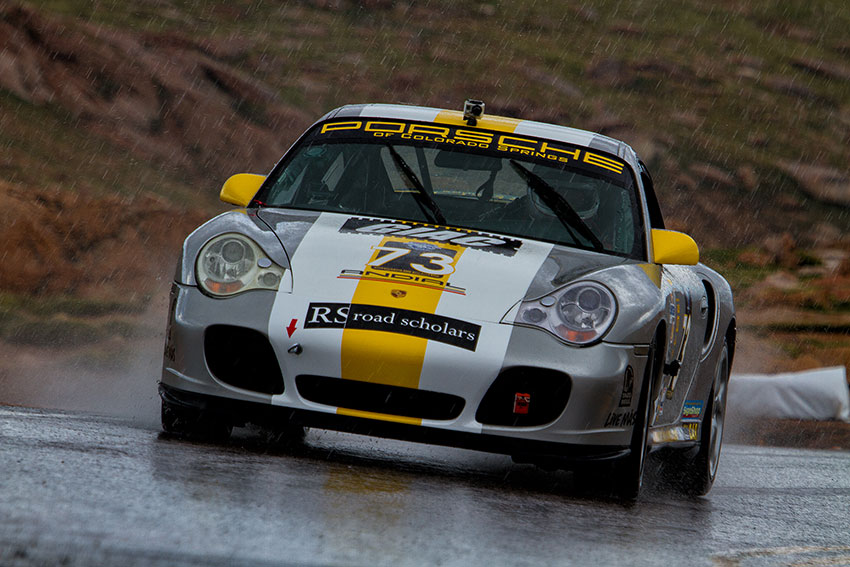
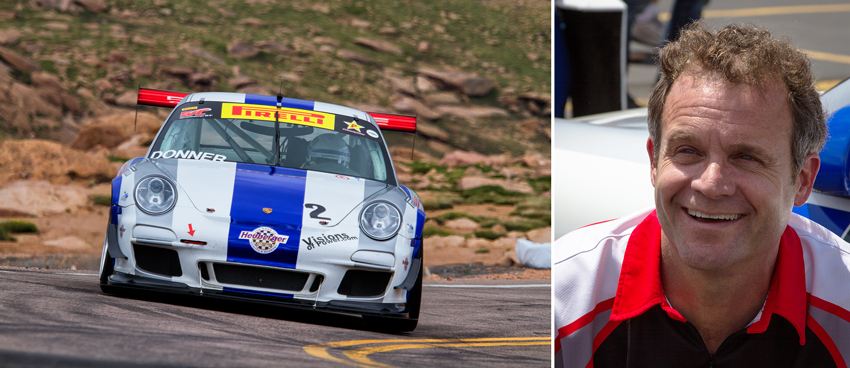
For 2014, organizers split the Time Attack class into two segments. Time Attack I was for all-out race-variants of street cars. Time Attack II included more streetable versions. Zwart was once again the favorite, though in the race he had fuel-feed problems, losing the race to fellow Porsche driver Vincent Beltoise in a GT3 Cup. Fred Veitch took Time Attack 2 with a 996tt.
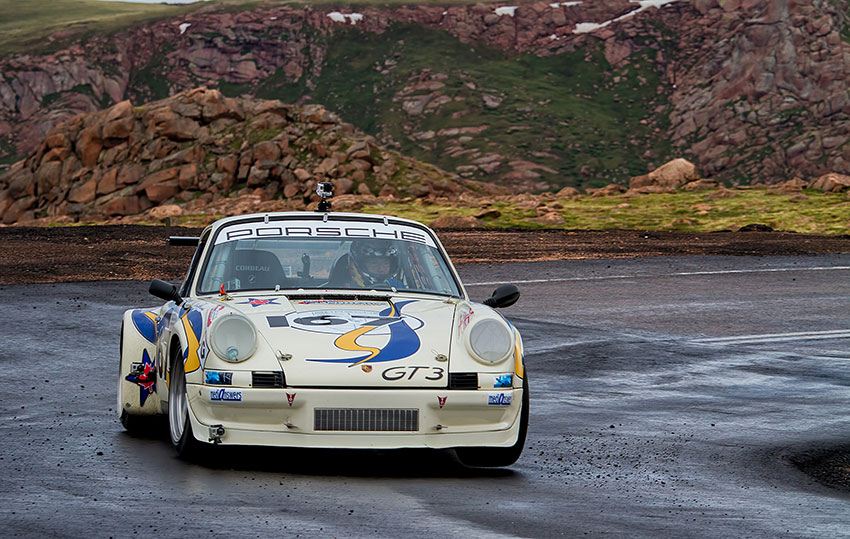
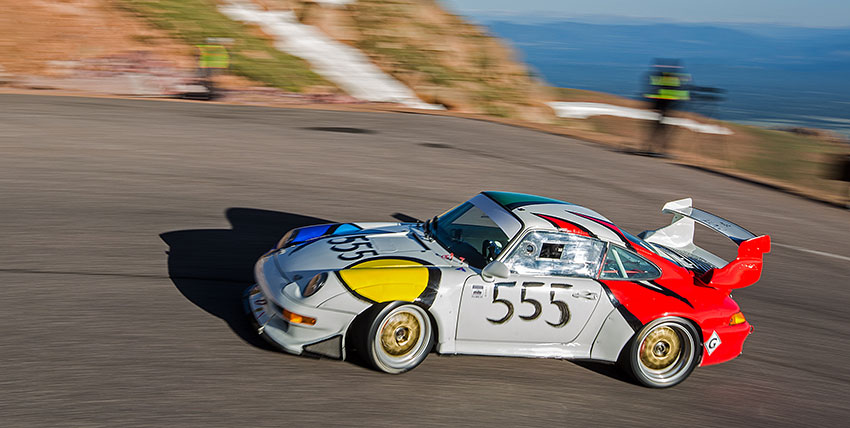
Year 2015 was a landmark for Porsche on the mountain. Zwart had the perfect run, taking the TA1 win and his eighth title on the mountain. Donner set a record in the TA2 class in a 991 Turbo S and Lennon again took the Vintage class for a Porsche sweep.
What does America’s mountain have in store for Porsche fans on June 26th, 2016? Zwart will be off at the Goodwood Festival of Speed with his 2015 winning car. In TA1, Donner is coming back loaded for bear with a 2015 GT3R. Veitch will be on the mountain again after a one-year absence, driving a Cayman GT4 Clubsport, and Rupert Hugues will campaign a GT3RS. In Open, Robert Prilika will run his 997 GT3 Cup. Lennon returns in Vintage with his RSR.

Given the ever-changing weather, the harsh demands on engines and suspensions, not to mention the altitude, and the possibility of making a mistake on any one of the 156 corners, nothing is ever a given on this mountain. But 2016 is a year in which Porsche has its greatest ever opportunity to shine as the one of the most dominant marques in Pikes Peak racing history.
